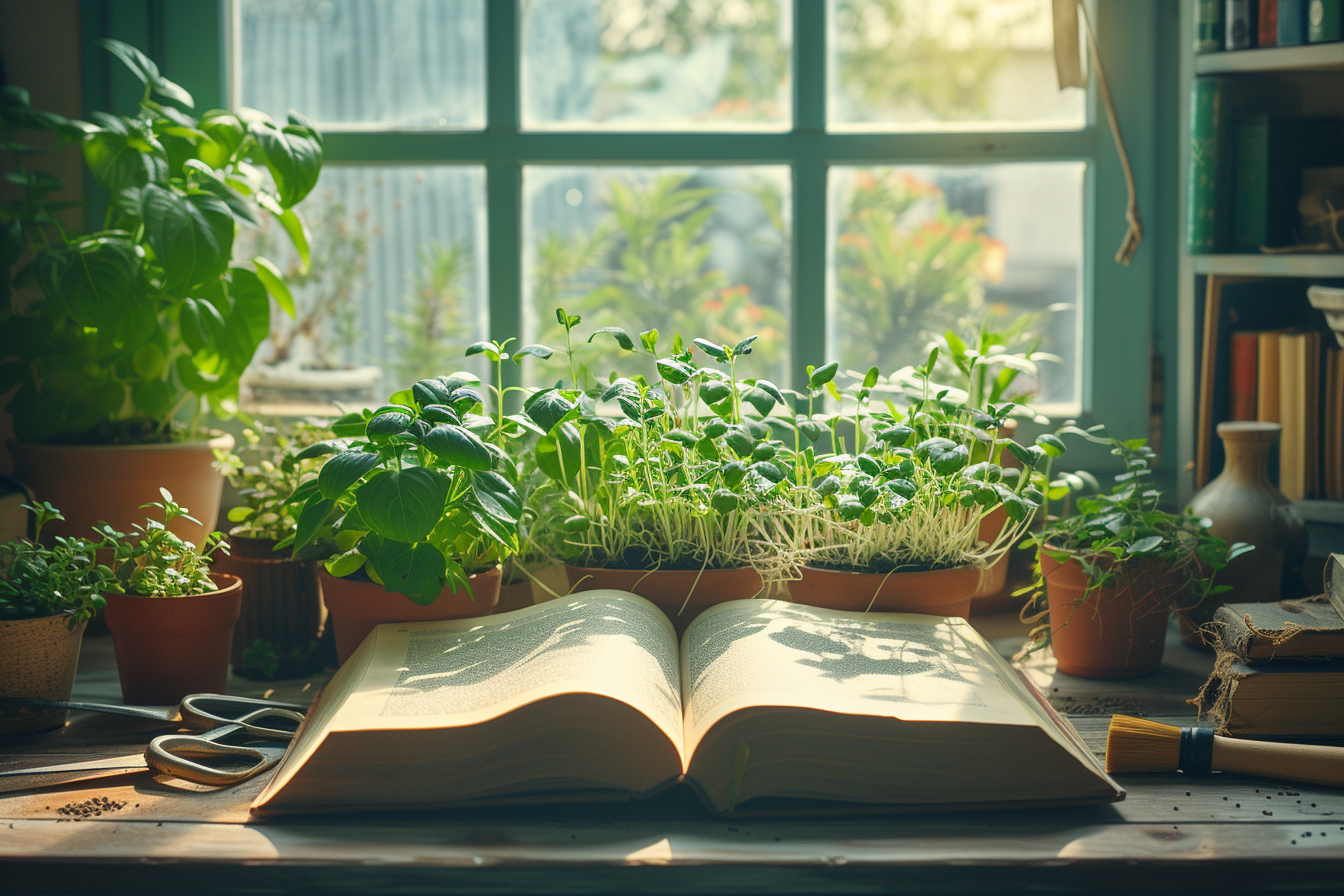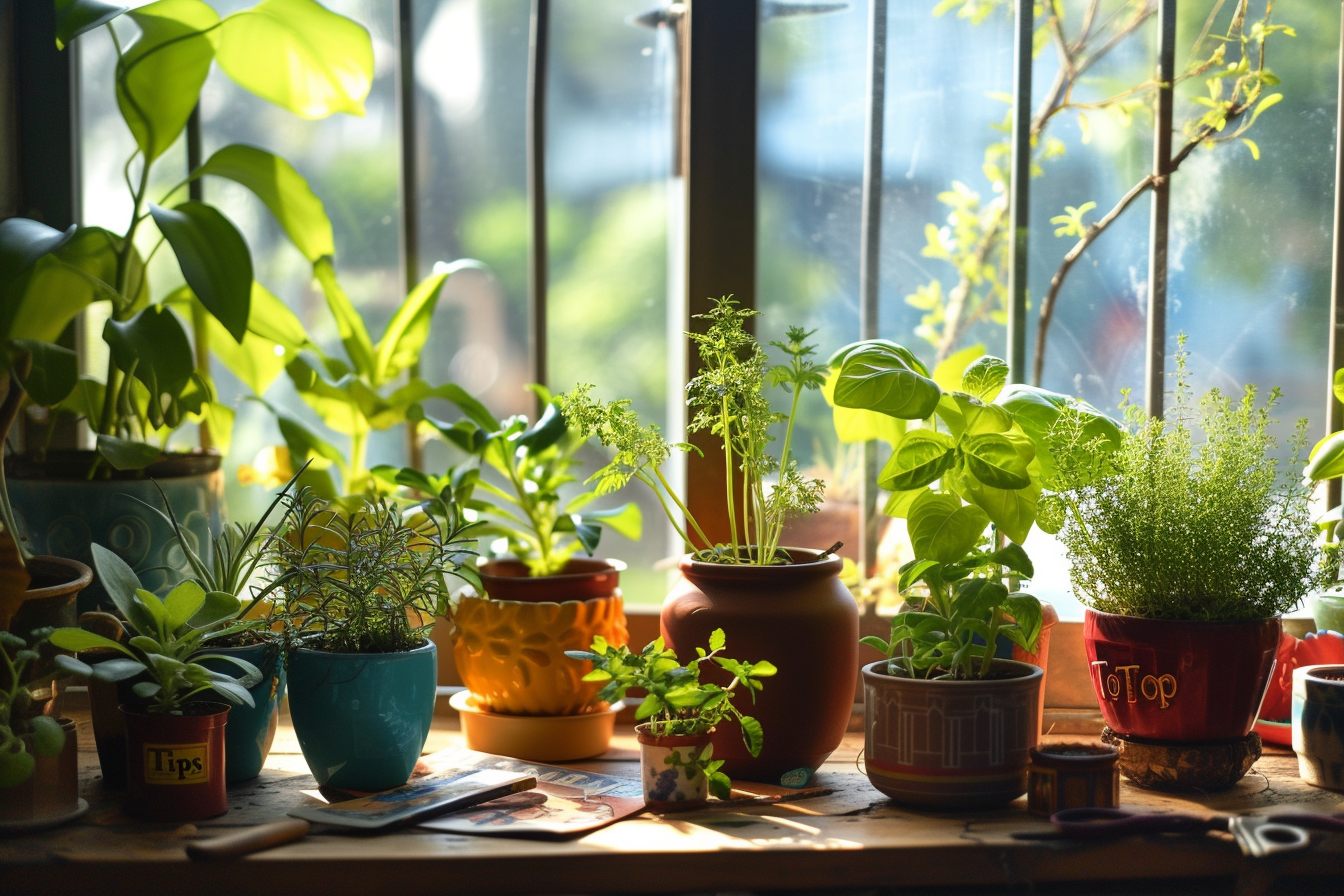Growing indoor herbal plants can transform your living space into a lush, green sanctuary that offers a multitude of benefits—from enhancing your cooking with fresh flavors to improving indoor air quality. To achieve success with your indoor garden, there are various considerations and strategies to employ.
Understanding the essentials of indoor herbal gardening
Lighting: A critical element for healthy plant growth, light ensures that your herbs can photosynthesize effectively. Most herbs require a good amount of sunlight, often needing around 6 to 8 hours of daylight. South-facing windows are often best, but if natural light is insufficient, investing in grow lights can provide a suitable alternative.
Watering Practice: Overwatering is a common mistake when it comes to indoor plants. Herbs prefer to be watered when the soil feels dry to the touch. It is essential to ensure pots have proper drainage to prevent root rot.
Air Circulation: Good air flow is necessary to prevent fungal infections and to promote strong stem growth. A gentle breeze from a fan or regular air movement in a room can significantly benefit your herbs.
Humidity: Many herbs originate from moderate climate regions and therefore prefer a relatively humid environment. If your home is dry, especially in the winter months, consider using a humidifier or placing a water tray near your plants to increase moisture levels.
Selecting the right herbs for indoor growth
Not all herbs are created equal when it comes to indoor gardening. Some species are better suited to an indoor environment:
Basil: A staple in many kitchens, basil thrives indoors with ample sunlight and regular watering. Keep it pruned for a bushier growth.
Mint: Known for its invasiveness outdoors, mint is an ideal indoor plant due to its contained environment. It grows quickly and prefers moist soil.
Oregano: This hardy herb requires less water than most and is well-suited to the indoors. Ensure it gets plenty of light and trim regularly.
Parsley: Parsley is adaptable, tolerating partial shade better than some other herbs. Keep soil consistently moist for best results.
Chives: These not only add a mild onion-like flavor to dishes but also are quite easy to grow indoors. Regular trimming encourages more growth.
Soil and fertilization for peak plant health
The choice of soil and fertilizer can make a notable difference in the success of indoor herbs. Opt for a high-quality potting mix that promotes excellent drainage. Herbs generally do not require heavy fertilization, but a balanced liquid fertilizer used every few weeks can assist in promoting healthy growth.
Potting and repotting
Select pots that complement the size of your herb plants, with ample room for root development. Equally important is choosing pots with drainage holes. When your herbs outgrow their pots—usually visible when roots poke through drainage holes—it’s time to repot. This process gives plants a refreshing soil environment and more room for growth.
Pruning and harvesting: encouraging lush growth
Pruning isn’t merely about harvesting your herbs for use—it’s a vital practice that encourages fuller plants. Regularly cutting back your herbs stimulates new growth and helps to prevent plants from becoming woody and sparse.
The right tools for health and maintenance
Equip yourself with a small pair of pruning shears or scissors to ensure clean cuts that won’t damage the plants. Keeping these tools clean helps prevent the spread of any potential diseases between plants.
Pests and problems: prevention and treatment
Indoor herbs can still be susceptible to pests and diseases. Common pests like aphids or spider mites may appear, and fungi can take hold if conditions are too damp. Vigilance is key—inspect plants regularly for signs of trouble. Use organic pest control methods, like neem oil or insecticidal soap, to handle infestations without introducing harmful chemicals to your edible plants.
Environmental controls for optimal plant health
Creating a stable environment is fundamental for indoor herbs. Extreme temperature fluctuations and drafts can stress plants. Aim to maintain a consistent temperature and avoid placing your herbs near heating vents or air conditioners.
The role of seasonality and adjusting care
While indoor plants are somewhat shielded from the seasons, they still respond to natural daylight changes throughout the year. Adjust watering and fertilization to match the growth rates during different seasons. Less water may be necessary during the slower winter months, while you might find your herbs require more hydration during the active summer growth period.
Educational resources and community
Seek out gardening books, online forums, and community groups for invaluable advice on caring for indoor herbs. Connecting with fellow enthusiasts can provide tips, encouragement, and a wealth of collective knowledge.
Engaging with continuous learning and adaptation

Embrace curiosity and be willing to experiment with various techniques to find what works best for your indoor garden. Each plant has unique needs, and conditions within homes vary. Documenting your gardening journey allows you to fine-tune your approach over time.
The joy and rewards of indoor herbal gardening
Not only do indoor herbs offer practical benefits, but they also open up a world of enjoyment for the grower. Nurturing these plants can be a rewarding pursuit, providing a sense of achievement as you watch them flourish under your care.
Growing indoor herbal plants successfully marries art with science, patience with attentiveness, and learning with pleasure. With these top tips, your indoor herbal garden is poised to thrive, offering fresh flavors and greenery to your home for months and years to come.
